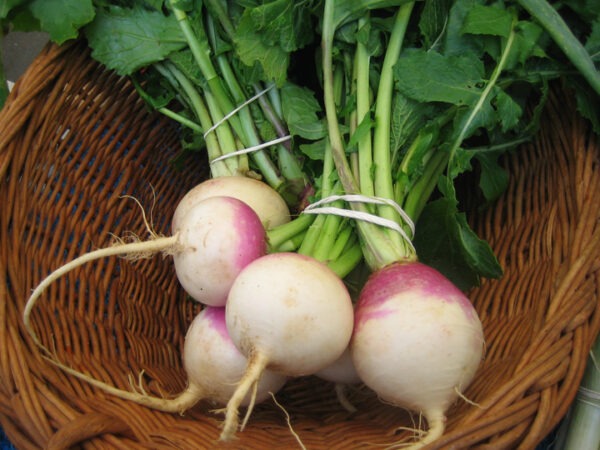Turnips are proud members of the brassica family and, as such, are closely related to cabbage, kale and brussels sprouts. This delicately flavoured root vegetable comes in a cool, creamy colour with a purple-green upper part – evidence of where the taproot as been exposed to the sunlight.

Turnips were first cultivated as a staple food during Greek and Roman times and, today, they are heralded for their vitamin C content, which is particularly rife in the leafy green stalks. Turnip greens, in fact, have several times more nutritional value than the turnip root, hosting antioxidants such as vitamin A, vitamin K, carotenoid, xanthin and lutein.
Once home, remove the greens from the roots and store the roots at a low temperature (32-35F) and at a high humidity if you can (95% or more). It’s best to use the green tops as quickly as possible, as they begin to lose their nutrients quite rapidly. The tops are a great addition to soups and stews, or you could try mixing them with kale (or another leafy green) for a twist on pesto.
To prepare the roots, peel winter turnips with a potato peeler and chop off the root end. Cut the peeled root into cubes, ready for cooking. Young, summer turnips don’t need to be peeled and they can be eaten raw, making a great addition to raw slaws alongside carrot, parsnips and beetroot. In many parts of Northern India, turnips are frequently pickled, try our pink pickled turnips recipe for a colourful result. For more turnip recipes, click here.